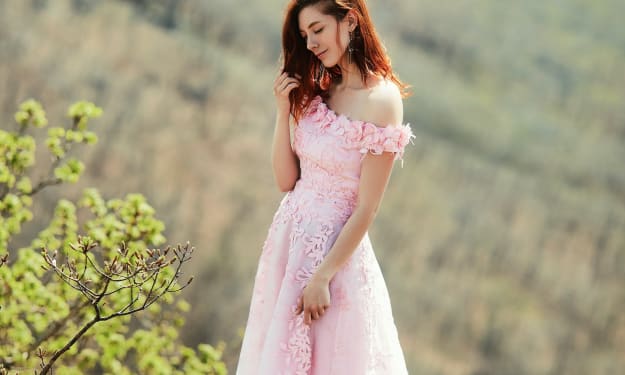The Colourful History Of The Little Black Dress
Black Dress

The little black dress (LBD) is a timeless staple in the world of fashion. Despite its simplicity, its history is anything but plain. The LBD has evolved over the decades, adapting to changing social norms, economic shifts, and cultural movements. This article explores the colourful history of the little black dress, tracing its origins, key milestones, and its enduring influence on fashion.
1. Origins in Mourning: The 19th Century
The roots of the little black dress can be traced back to the 19th century, when black attire was primarily associated with mourning.
Victorian Mourning Dress:
Queen Victoria: After the death of Prince Albert in 1861, Queen Victoria wore black for the rest of her life, setting a trend for mourning attire that influenced society.
Symbol of Grief: Black dresses became a symbol of grief and respect, with strict codes governing their use during mourning periods.
2. The Birth of the LBD: The 1920s
The 1920s marked a significant shift in the perception of black dresses, thanks to the revolutionary designs of Coco Chanel.
Coco Chanel's Vision:
1926 Vogue: In 1926, Chanel introduced a simple black dress in Vogue, describing it as "a sort of uniform for all women of taste." This dress was dubbed "Chanel's Ford" for its universal appeal and accessibility.
Breaking Conventions: Chanel's LBD was a stark departure from the elaborate, colourful dresses of the previous era. Its simplicity and elegance made it a versatile piece that could be dressed up or down.
3. Hollywood Glamour: The 1930s and 1940s
The LBD gained further popularity in the 1930s and 1940s, thanks to its frequent appearances in Hollywood films.
Iconic Moments:
Jean Harlow and Joan Crawford: Actresses like Jean Harlow and Joan Crawford popularized the little black dress on screen, showcasing its allure and sophistication.
Film Noir Influence: The LBD became synonymous with the femme fatale character in film noir, adding an element of mystery and seduction to its image.
4. The Post-War Era: The 1950s and 1960s
The LBD underwent significant transformations in the post-war era, adapting to new fashion trends and social changes.
Audrey Hepburn in "Breakfast at Tiffany's":
1961 Iconic Dress: Audrey Hepburn's black Givenchy dress in the 1961 film "Breakfast at Tiffany's" became one of the most iconic LBDs of all time. The dress epitomized elegance and sophistication, cementing the LBD's status as a fashion staple.
Mod Fashion:
1960s Revolution: The 1960s saw a shift towards shorter hemlines and more experimental styles. The little black dress adapted to this trend with mod-inspired designs that were youthful and bold.
5. Power Dressing: The 1980s
The 1980s brought about the era of power dressing, where the LBD played a crucial role in the wardrobes of working women.
Professional Elegance:
Structured Silhouettes: The LBD took on more structured silhouettes, often paired with sharp blazers and bold accessories to convey confidence and authority.
Corporate Chic: The LBD became a go-to piece for professional women, symbolizing ambition and independence in the corporate world.
6. Minimalism and Grunge: The 1990s
The 1990s saw diverse fashion trends, from minimalism to grunge, influencing the evolution of the little black dress.
Minimalist Appeal:
Calvin Klein: Designers like Calvin Klein embraced minimalism, creating sleek, simple LBDs that focused on clean lines and understated elegance.
Grunge Influence: The grunge movement also left its mark, with LBDs styled in more casual, edgy ways, often paired with combat boots and leather jackets.
7. The 21st Century: Versatility and Innovation
The new millennium has seen the LBD continue to evolve, with designers experimenting with new fabrics, cuts, and styles.
Contemporary Trends:
Sustainable Fashion: The rise of sustainable fashion has led to the creation of eco-friendly LBDs made from organic and recycled materials.
Innovative Designs: Modern little black dresses feature innovative designs such as asymmetrical cuts, unique textures, and bold embellishments, keeping the classic dress fresh and exciting.
8. Cultural Impact and Enduring Popularity
The LBD's cultural impact is undeniable, influencing fashion, film, and even literature.
Pop Culture Phenomenon:
Red Carpet Staples: Celebrities continue to wear LBDs on the red carpet, showcasing their timeless appeal and adaptability to current trends.
Literary References: The little black dress has been referenced in numerous books and articles, often symbolizing elegance, mystery, and sophistication.
Global Appeal:
Cross-Cultural Influence: The simplicity and versatility of the LBD have made it a beloved garment across different cultures and fashion landscapes.
9. The LBD Today: A Wardrobe Essential
Today, the little black dress remains a wardrobe essential, celebrated for its ability to adapt to any occasion and personal style.
Styling Versatility:
Day to Night: The LBD can effortlessly transition from day to night with the right accessories. Pair it with a blazer and flats for the office, then switch to heels and statement jewellery for an evening out.
Seasonal Adaptation: Layering the little black dress with tights, boots, and a cozy coat makes it suitable for winter, while lightweight fabrics and sandals keep it perfect for summer.
Conclusion
The little black dress has come a long way from its origins as mourning attire to becoming a symbol of timeless elegance and versatility. Through the decades, it has adapted to changing fashion trends, social movements, and cultural shifts, maintaining its status as a beloved wardrobe staple. The LBD's colourful history is a testament to its enduring appeal and its ability to continually inspire and captivate the fashion world. As we look to the future, the little black dress will undoubtedly remain a key piece in every woman's closet, offering endless possibilities for style and expression.
About the Creator
Enjoyed the story? Support the Creator.
Subscribe for free to receive all their stories in your feed. You could also pledge your support or give them a one-off tip, letting them know you appreciate their work.






Comments
There are no comments for this story
Be the first to respond and start the conversation.